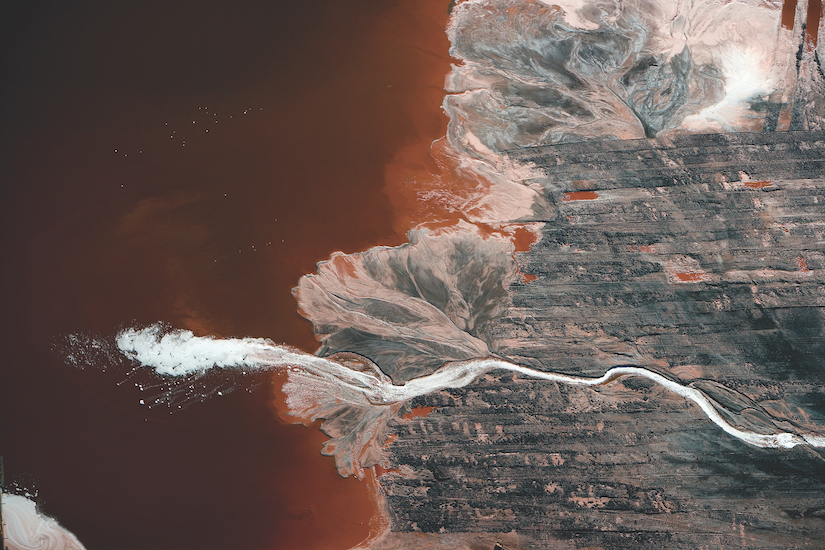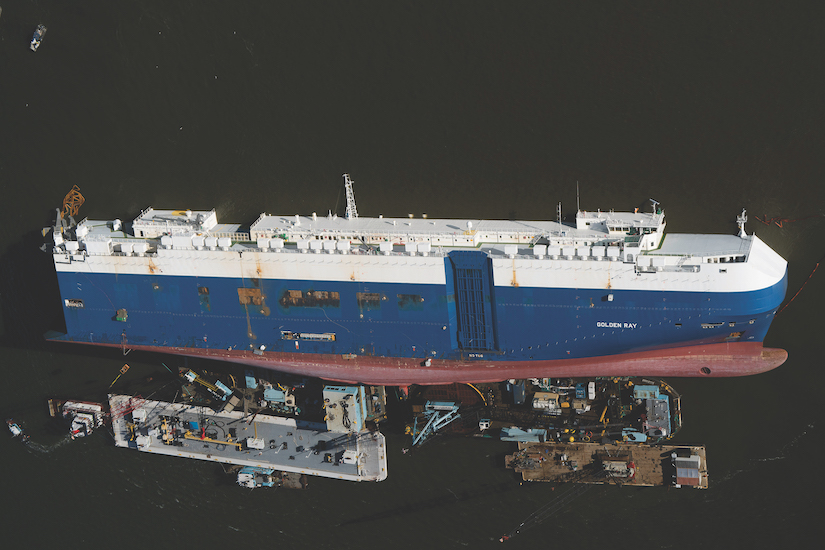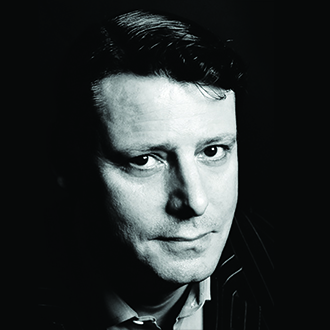From the time he first picked up a camera, the photographer and activist J Henry Fair told me in an email exchange last month, he knew that it would be his tool to tell stories about man and nature. Born in Charleston in time to witness the race riots, the former New Rochelle resident says he was “socialized with the great American story” and uses pictures to tell stories about people and things that effect others. “Exploring the winding tidal rivers of the low country in a small jon boat certainly affected my sense of nature as the source of all the earthly bounty we enjoy.”
Through photography, Fair has been able to illustrate that earthly bounty — and alert us to our abuse of it. His acclaimed book, “Industrial Scars: The Hidden Costs of Consumption,” now in its second edition, tells the story of the impact of the consumer lifestyle on the natural systems that support life on the planet.
His most recent book, the first of the “Coastline” series, “On the Edge: From Combahee to Winyah” was published a year ago to lavish reviews. The series is a portrait of the coasts before the major impacts of climate change and ocean rise take effect. Through words and pictures, Fair illustrates beyond reasonable doubt that just as these realities council a move of infrastructure away from the ocean, coastal population density and infrastructure investment on the shore are rapidly increasing.
He started out with a pocket Instamatic and a Polaroid, but the first real camera that required his technical knowledge and understanding was an old German-made Kodak Retina that he “liberated” from his father. These days, he is pragmatic about cameras and says what he uses most often is a smart phone, since he hates carrying a big camera. But if he really wants to take a “good” picture, he’ll use a big camera with a big lens. And those cameras change constantly, depending on his need and the current technology.
One of the most intriguing, most striking features of Fair’s photography, is the contrast between the beauty of his photographs and the inner dangers they seek to portray. I want to understand what it is, that perspective, or ‘eye’, or even trick which makes the detritus in “Industrial Scars,” say, so very beautiful and appealing. Given this inherent beauty in so many of his photographs, how does he reconcile ugly subjects with stunning images?
He says he wants his photographs to work on multiple layers. “First, they must be beautiful, but then the irony of making something beautiful out of something terrible comments on the irony of life in the modern world, where each of us, no matter how conscientious, must realize that we’re stealing from our grandchildren by not living a sustainable life.”
He says the constant study of art teaches him how the masters stimulate the emotions of the viewer through lighting, composition and color. “My enduring fascination with industry and decay led me to photograph ruins and old machines and toxic sites,” he explains, adding that he was “looking for a way to tell a story about the environment.”
Fair started to sneak into refineries to make pictures of the inner workings, hoping to highlight the disastrous effect of hydrocarbons on our bodies and environment. “This was before the climate crisis was a worldwide news item and before 9/11,” he elaborates, “so the level of paranoia in the United States was not so high.”
Being from Charleston, which Fair points out has suffered the impact of hurricanes through its history, and later living near Glen Island (“in the days when I was an avid sailboat racer”), has made him constantly aware of the ocean and weather, as well as their effect on our lives. Some of his favorite images in “Industrial Scars” came from the Mississippi River Industrial Corridor just after Hurricane Katrina. For his “Coastlines” project, he has also carried out an exploration of his current hometown, New York City, which like many of the world’s great cities is under the threat of ocean rise.
The big question is, Are people listening? “In our modern era of social media and ever more limited echo chambers, most people seem to hear only what confirms their existing beliefs. My desire is not to preach to the choir but to create compelling art that helps to explain and prompts curiosity about the complex science behind the interruptions we are causing to this incomprehensibly complex planet, which has provided us clean air, clean water, regular rainfall, fish in the ocean, etc., all for free.”
It is a powerful argument. To reach the widest possible audience, Fair says he wants his art to be in the public sphere. Last year, his exhibit with the European Union at the Berlin Museum of Natural History was seen by 800,000 people and the television portraits done by major German networks were seen by millions. He divides his time between New York and Berlin, but in these lockdown days he is enjoying sleeping, cooking and eating, renovating his apartment, shooting a still-life series, as well as writing, scanning and archiving,
An exhibit and teaching engagement in Singapore in March were canceled owing to the coronavirus but have been rescheduled for September, while coastal photo projects in various places have been put on hold. In “normal” times, he travels constantly, though nearly always for work. “Limiting my environmental footprint drives much of my decision-making in this regard but also dictates how I live my life,” he says.
Is he always photographing? “Often, the limitations of the smart-phone camera prevent my photographing,” he acknowledges, “but I am always looking.”
For more, visit jhenryfair.com.






